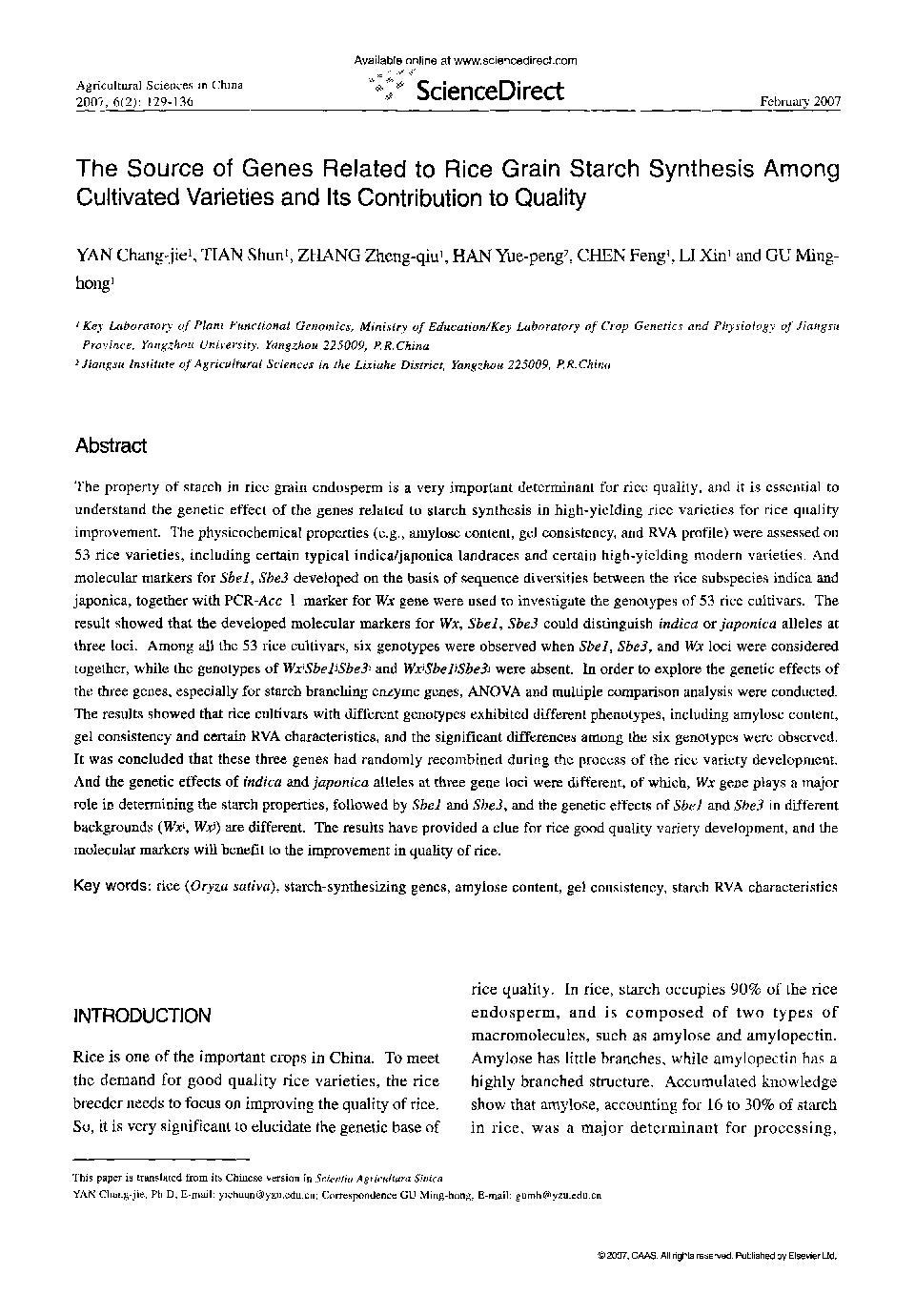| Article ID | Journal | Published Year | Pages | File Type |
|---|---|---|---|---|
| 4490890 | Agricultural Sciences in China | 2007 | 8 Pages |
The property of starch in rice grain endosperm is a very important determinant for rice quality, and it is essential to understand the genetic effect of the genes related to starch synthesis in high-yielding rice varieties for rice quality improvement. The physicochemical properties (e.g., amylose content, gel consistency, and RVA profile) were assessed on 53 rice varieties, including certain typical indica/japonica landraces and certain high-yielding modern varieties. And molecular markers for Sbel, Sbe3 developed on the basis of sequence diversities between the rice subspecies indica and japonica, together with PCR-Acc I marker for Wx gene were used to investigate the genotypes of 53 rice cultivars. The result showed that the developed molecular markers for Wx, Sbel, Sbe3 could distinguish indica or japonica alleles at three loci. Among all the 53 rice cultivars, six genotypes were observed when Sbel, Sbe3, and Wx loci were considered together, while the genotypes of WxiSbeljSbe3i and WxiSbeljSbe3i were absent. In order to explore the genetic effects of the three genes, especially for starch branching enzyme genes, ANOVA and multiple comparison analysis were conducted. The results showed that rice cultivars with different genotypes exhibited different phenotypes, including amylose content, gel consistency and certain RVA characteristics, and the significant differences among the six genotypes were observed. It was concluded that these three genes had randomly recombined during the process of the rice variety development. And the genetic effects of indica and japonica alleles at three gene loci were different, of which, Wx gene plays a major role in determining the starch properties, followed by Sbel and Sbe3, and the genetic effects of Sbel and Sbe3 in different backgrounds (Wxi, Wxj) are different. The results have provided a clue for rice good quality variety development, and the molecular markers will benefit to the improvement in quality of rice.
